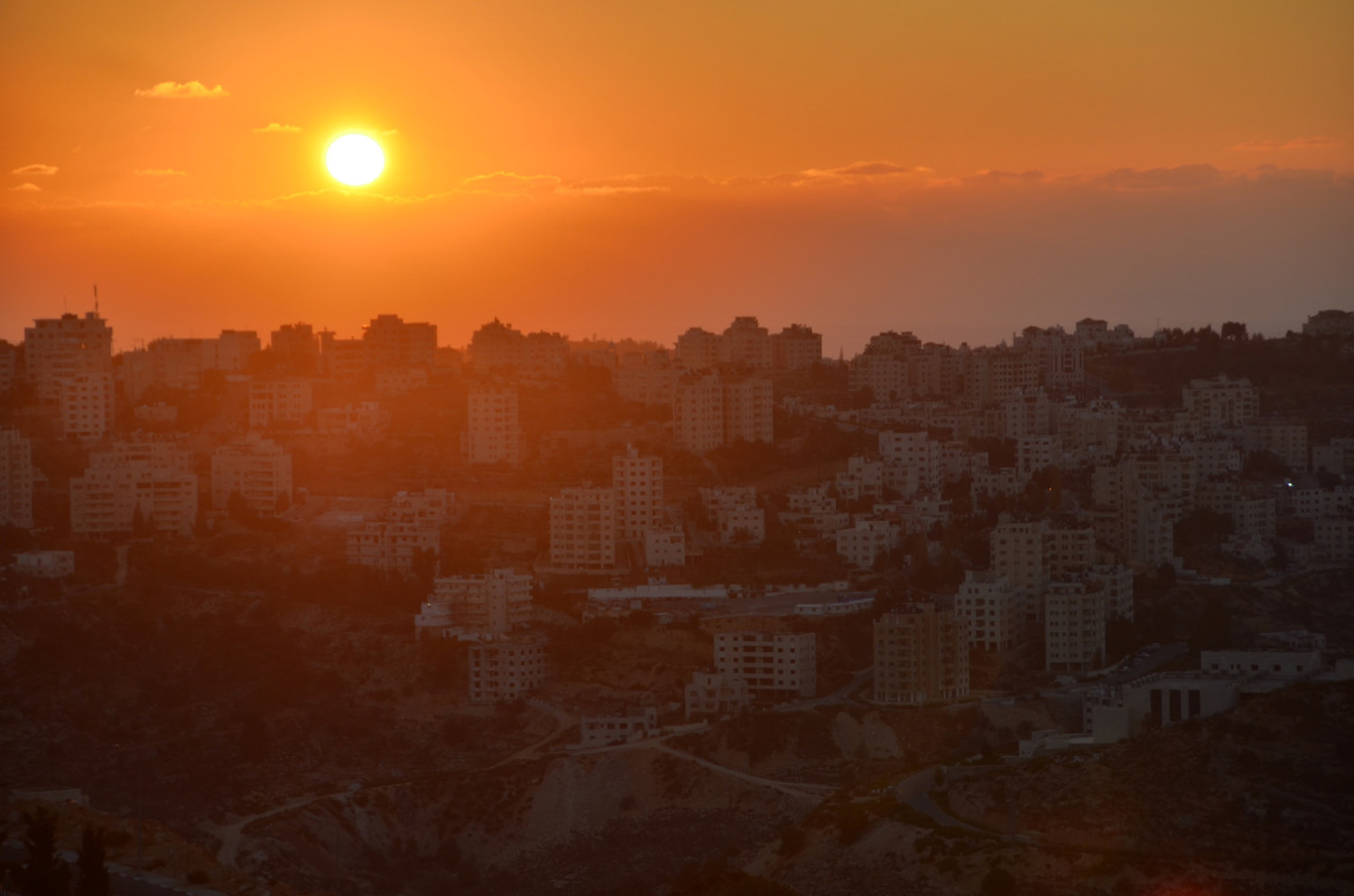“The first thing you need to know about me,” the stocky, animated man standing at the front of the van announced, “is that I am a terrorist.” After a requisite awkward silence, everyone onboard burst out in hysterical laughter – our tour of the West Bank was off to a good start.
It might surprise you to learn that I, independent travel crusader, went on an organized tour, and I have two things to say about that. One, that the complicated checkpoint mazes in Israel’s occupied territories makes independent travel to the West Bank next to impossible; and two, that the West Bank “tours” Abraham Hostel organizes are not typical in any way – I took both of them.
The first, dubbed “Best of the West Bank,” began in Bethlehem with the aforementioned terrorist (whose name I would later learn is Tamer) and, after a brief stop at the must-see Church of the Nativity (which was packed to the gills with retirees on Holy Land tours) we got right into the meat of it.
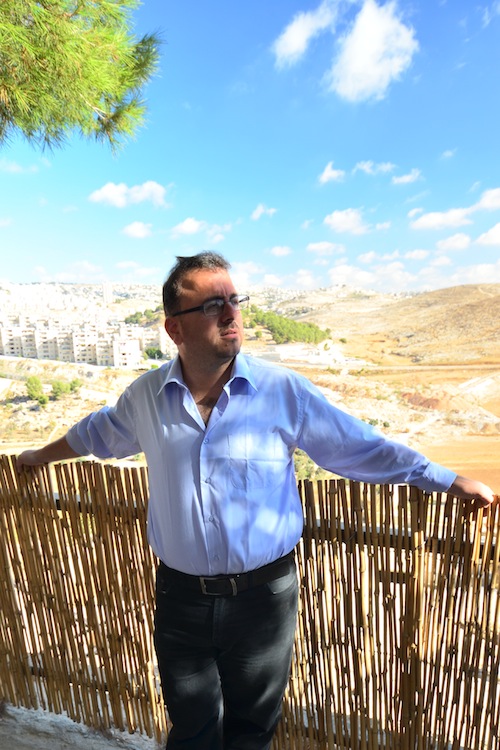
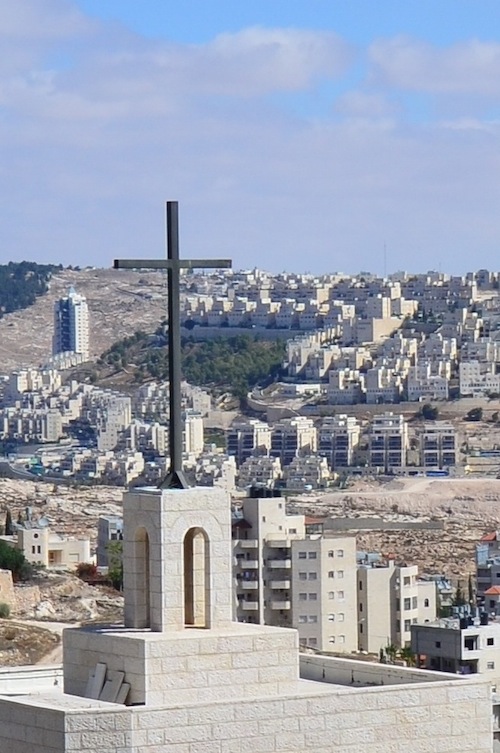

“What you see behind me,” Tamer said, and pointed his hand toward the house-covered hillside, “is an Israeli settlement. Now, today’s tour is not about politics or the occupation – although, as a Palestinian, I cannot promise I won’t mention these issues from time to time – but you need to understand something, before we begin.
“The West Bank,” he continued, “is divided into three zones: Zone A, Zone B and Zone C. Zone A is completely controlled by the Palestinian Authority; Zone C is completely controlled by the Israelis; and Zone B is under “joint” control, which really means the Israelis control it, which means that Palestinians really only control Zone C. Any questions so far?”
One of the many Germans in our group raised her hand. “What percentage of the West Bank does Zone C occupy?”
“Take a guess.” He smiled, I presumed ironically.
People shouted out random numbers, ranging all the way from near zero to almost 100. I made my guess last, and without any premeditation whatsoever. “Twenty-two?”
“You’re a good guess. But enough about that for now – let’s get on the road.”

As we drove further into the West Bank, I was taken aback by how serene and beautiful the land appeared, in spite of the warning signs and separation walls that seem and widespread as pristine towns and villages strewn over mountain tops, or winding roads that seem like threads of silver strung out over the vastness of the Jordan Valley.

And I was humbled, whenever we stopped and spoke with Palestinians, be they shopkeepers, roadside vendors, tourism industry professionals or even microbrewery owns (yes, Palestine has its own microbrewery and yes, the beer is good), how un-bitter they all presented themselves to be.

Pragmatic, too. “The truth is,” Tamer said, after another traveler asked him how, if Palestinians control less than a quarter of the already-tiny West Bank, a state of their own could ever come to fruition, “is that one-state, two-state, it doesn’t matter. Most people here aren’t as concerned about the name of the place they live as they are about living in peace, and without fear.”
I would hear Tamer’s sentiment echoed by every Palestinian I met that day, during the morning in Bethlehem and the Jordan River, the afternoon at Jericho and Tybeh villages and as the sun set over the bustling city of Ramallah in the evening. This was shocking, given how quick even moderate Israelis are to characterize “most” Palestinians as being murderous Jihad-mongerers.
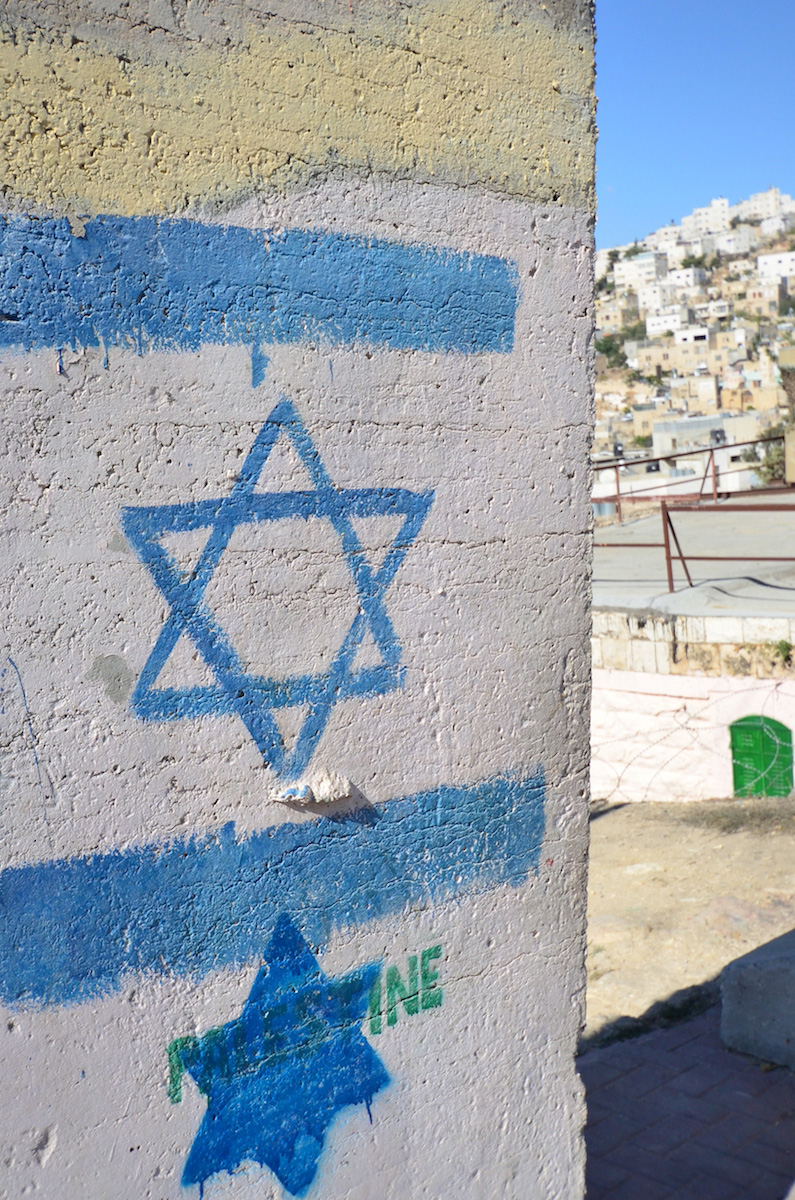
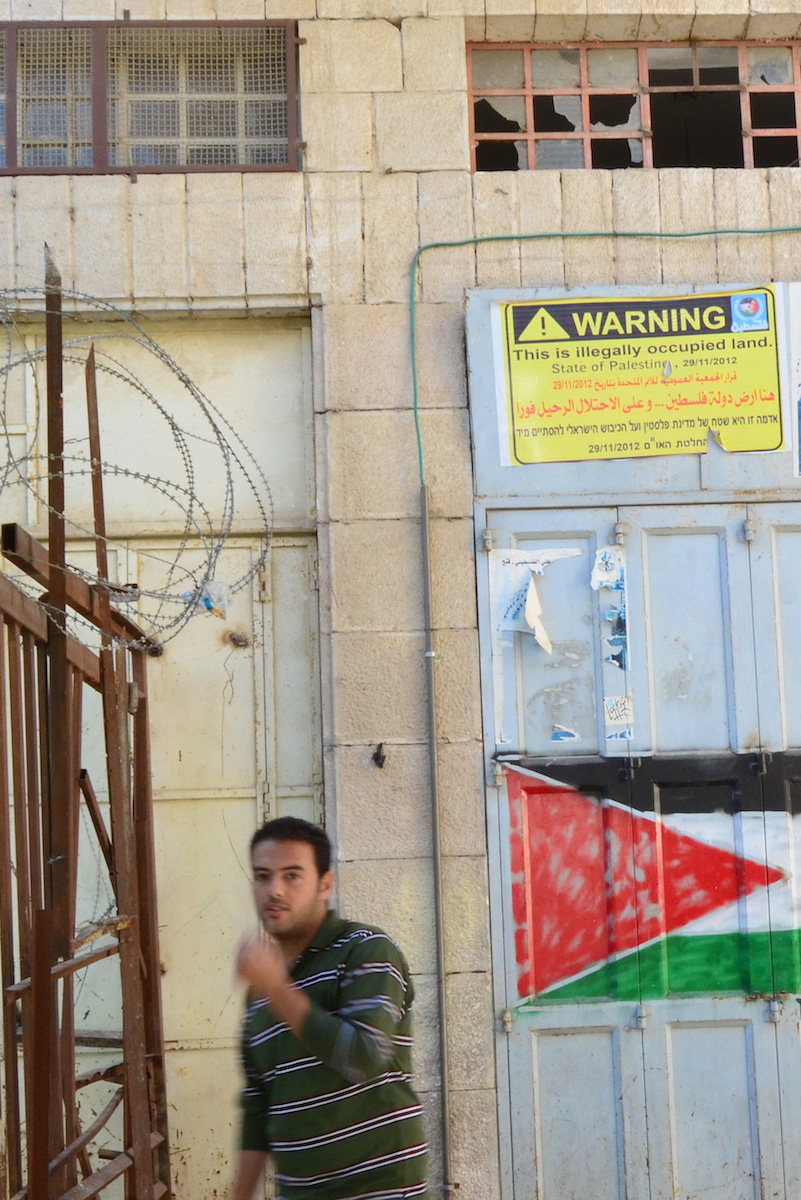
The next day I embarked on the second tour, aptly-named “Dual Narrative,” which took me to the city of Hebron, arguably the most volatile and controversial site of Jewish settlements within the West Bank, with a man named Adam, a Jewish settler originally from Arkansas.
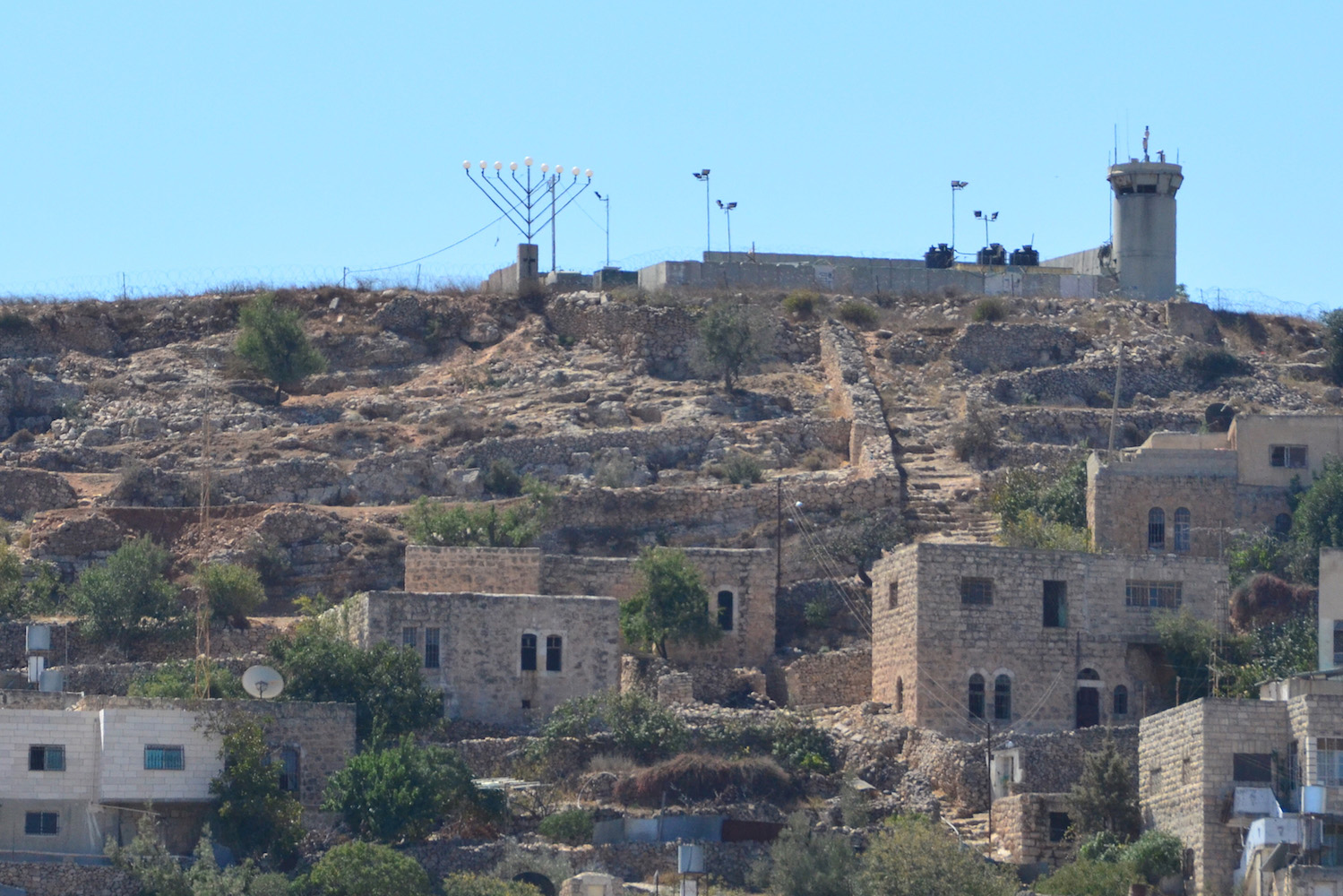
While Tamer had addressed the conflict immediately and in a way that put all of us at ease (“You have to have a sense of humor to survive here,” he’d frequently remind us), Adam’s introduction created a tense atmosphere from the get go. “We’re traveling in an armored bus,” he announced en route to Jerusalem central station. “You never know when danger can arise in a place like this.”
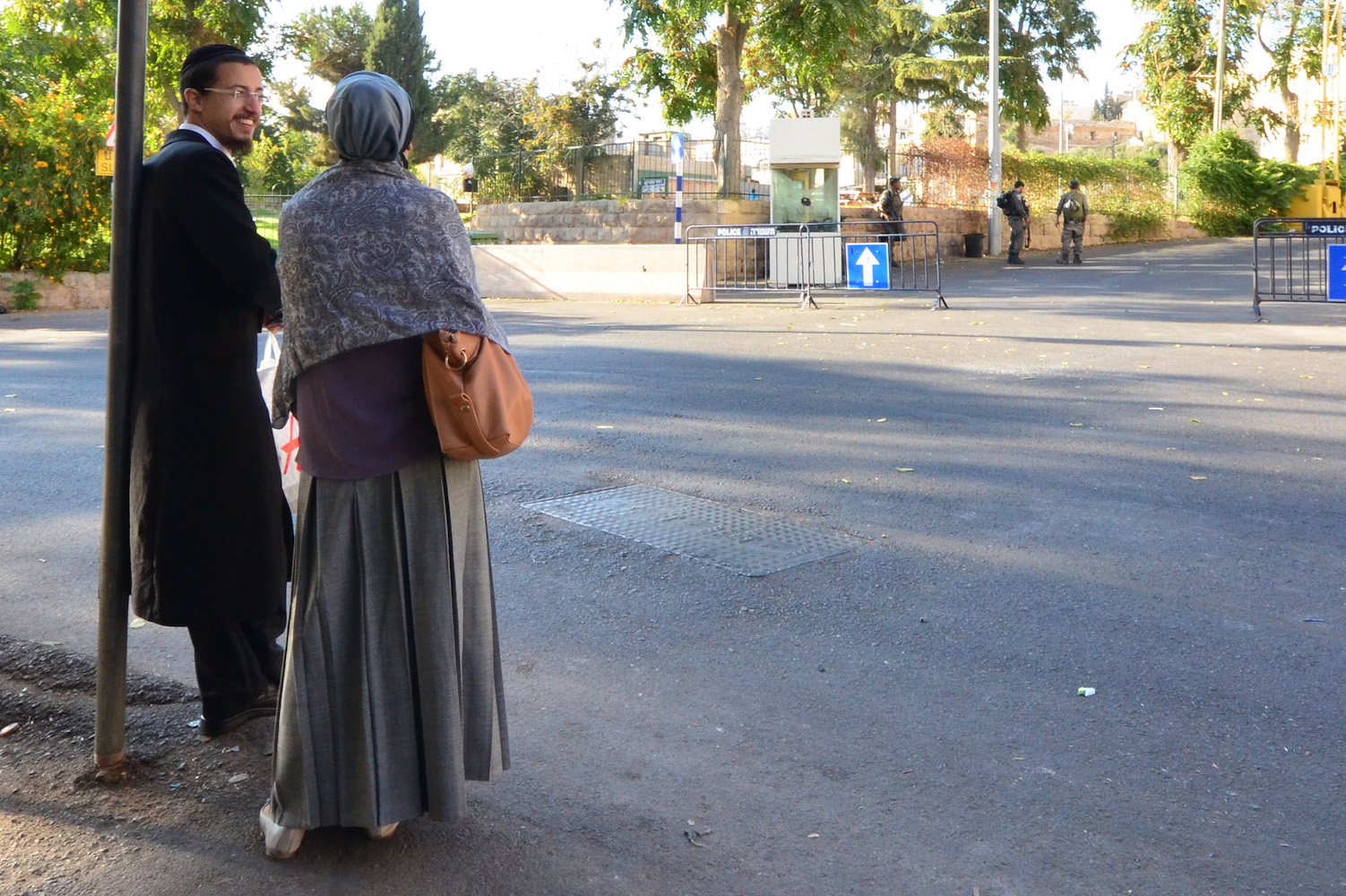
What struck me the most about Hebron as we arrived around an hour after departing Jerusalem was how fortified it seemed. The old city, which sits at the bottom of a ravine, was surrounded by military watch towers. Security checkpoints, administered by the Israeli military, were set up in several places; Israeli flags were flying everywhere I looked.
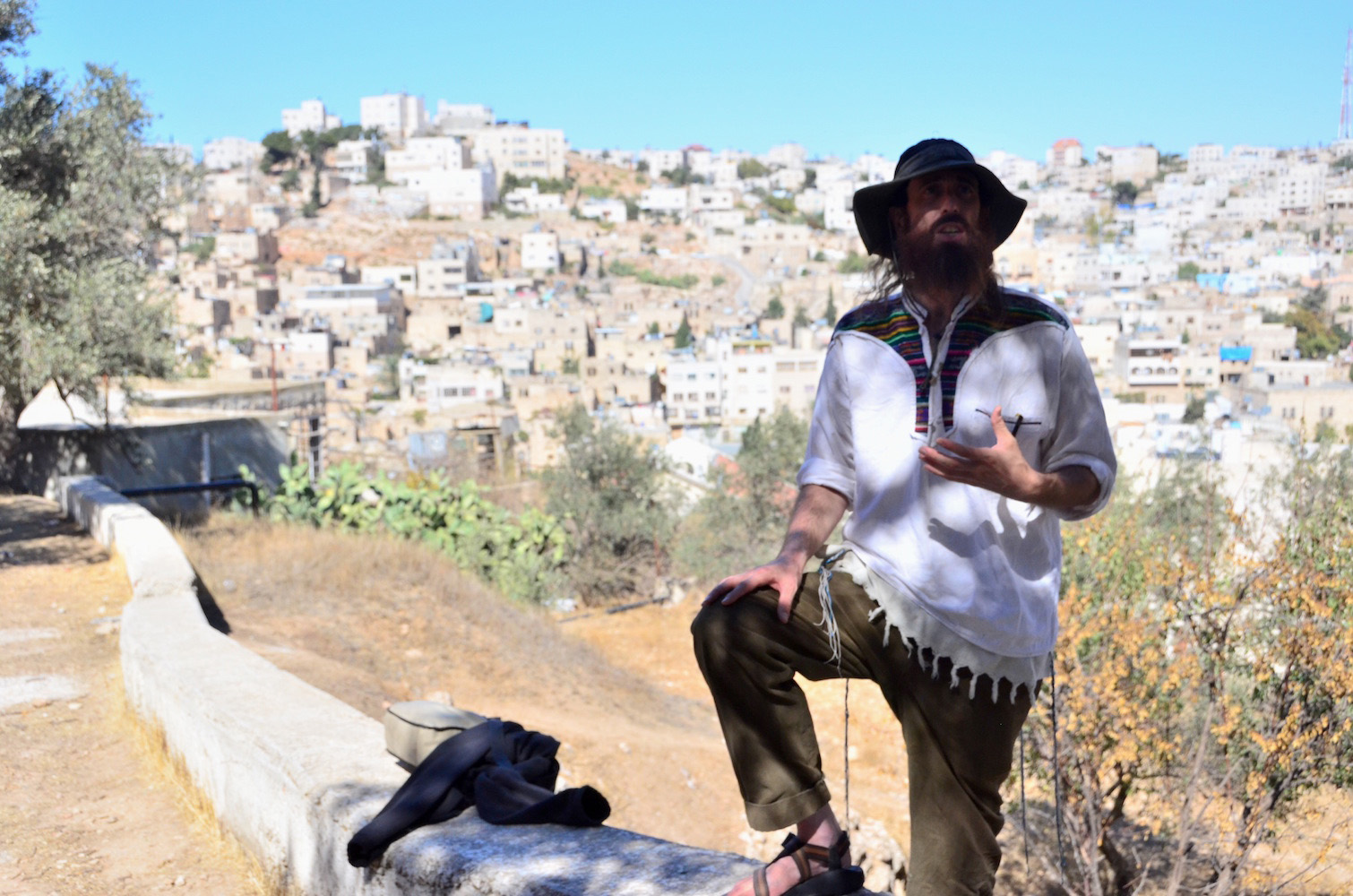
I was surprised to learn, after Adam handed us off to Mohammad, who gave us the first narrative of our tour in the Palestinian-controlled “H1” sector of the city, how small a minority the Israeli settlers made up.
“There are only five hundred of them,” he said as we looked out over one of the four small settlements they live in, from the roof of a Palestinian house the Israelis had apparently been trying for years to confiscate, “but they have over 2,000 military personnel protecting them. Crazy, right?”
Not as crazy as what happened next.
We walked down the dilapidated staircase of the house, whose owners the Israeli government had allegedly offered several million U.S. dollars to leave, but instead of walking out the same way we came in, we went inside a green room, filled with dresses, purses and several pictures of Saddam Hussein.
A few minutes later, a heavy-set man walked in and sat down. “My name is Abed,” he said unassumingly, “and I would like to tell you my story. First, notice how the back windows of my room are dark – and remember this for later.”
Abed explained to us how, after Israeli settlers murdered his wife and blinded, using a mix of acid and tear gas, the first of the three children she had born him, they threw a live snake into a small hole he’d left on the back of his house for light – hostility from his neighbors had forced him to permanently shutter his windows – into a room where, incidentally, his 10-month old son was playing.
“The good news,” he chuckled as a happy toddler, who ran into the corner of the room and pulled out a soda bottle that encased a very well-preserved serpent, “is that we got the snake before it got us.” The boy sat on his father’s lap, and played curiously with the bottle.
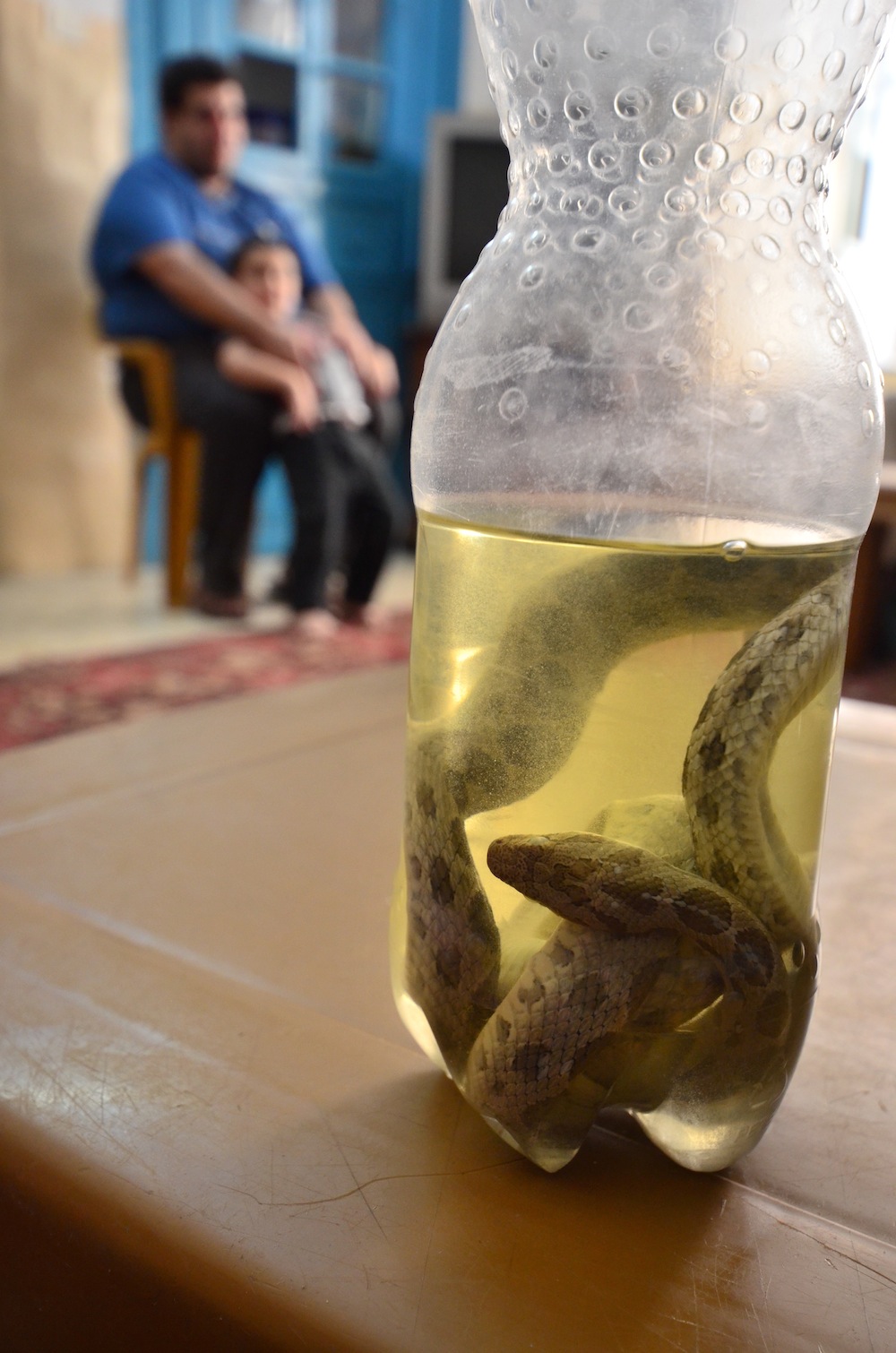
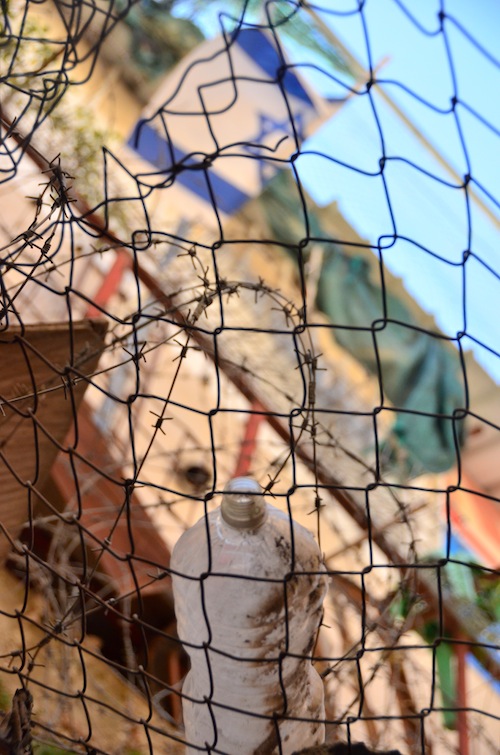
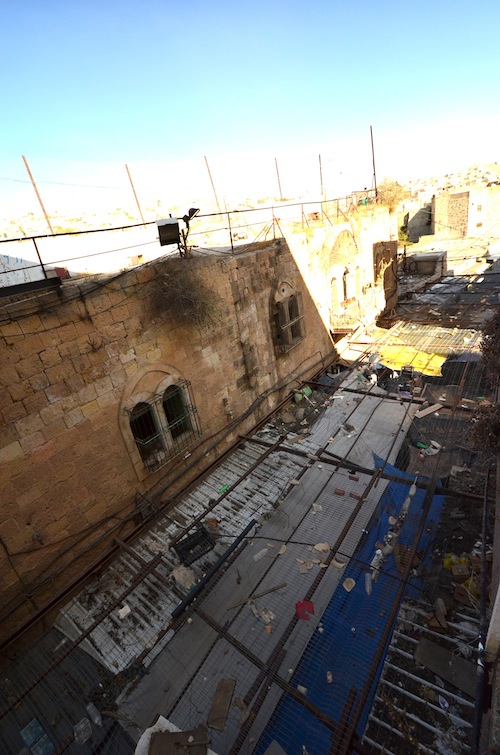
Like so many Palestinians I had met and would meet that day, Abed not only seemed in good spirits, relatively to what had happened to him, but explicitly stated his desire to live in peace, regardless of politics or legalities. But as we walked through the souk to meet Adam for the second part of the tour – the Jewish narrative – it seemed unlikely that peace would ever prevail.
Everywhere I looked, former thru streets had been sealed off, often in extremely crude ways, using sheet metal, plywood and concrete blocks. The walkway, the de-facto “Main St.” of the old city, was covered by barbed wire mesh fencing, which had been littered with trash, stones and various other trinkets. And of course, there were the watchtowers, and the checkpoints.
“I hope you noticed,” Adam told us, after we’d cleared the H1 checkpoint into H2, and were ascending Tel Rumeida, a large hill that rises over the city and was, according to some archaeologists, the site of the biblical Hebron, “that all the labels on those bottles over the walkway were Arabic. They threw them there before we were here, and never cleaned them up, or let us do it for them.”
It was the only comment within the first two hours of Adam’s portion of the tour which dealt with anything remotely contemporary. Instead, he used the scenery around us as the backdrop for a history lesson, explaining how both religion and science had traced the origins of the Jews not only to Israel but to Hebron, where the prophet Abraham had allegedly been sent by God, thus founding Judaism.
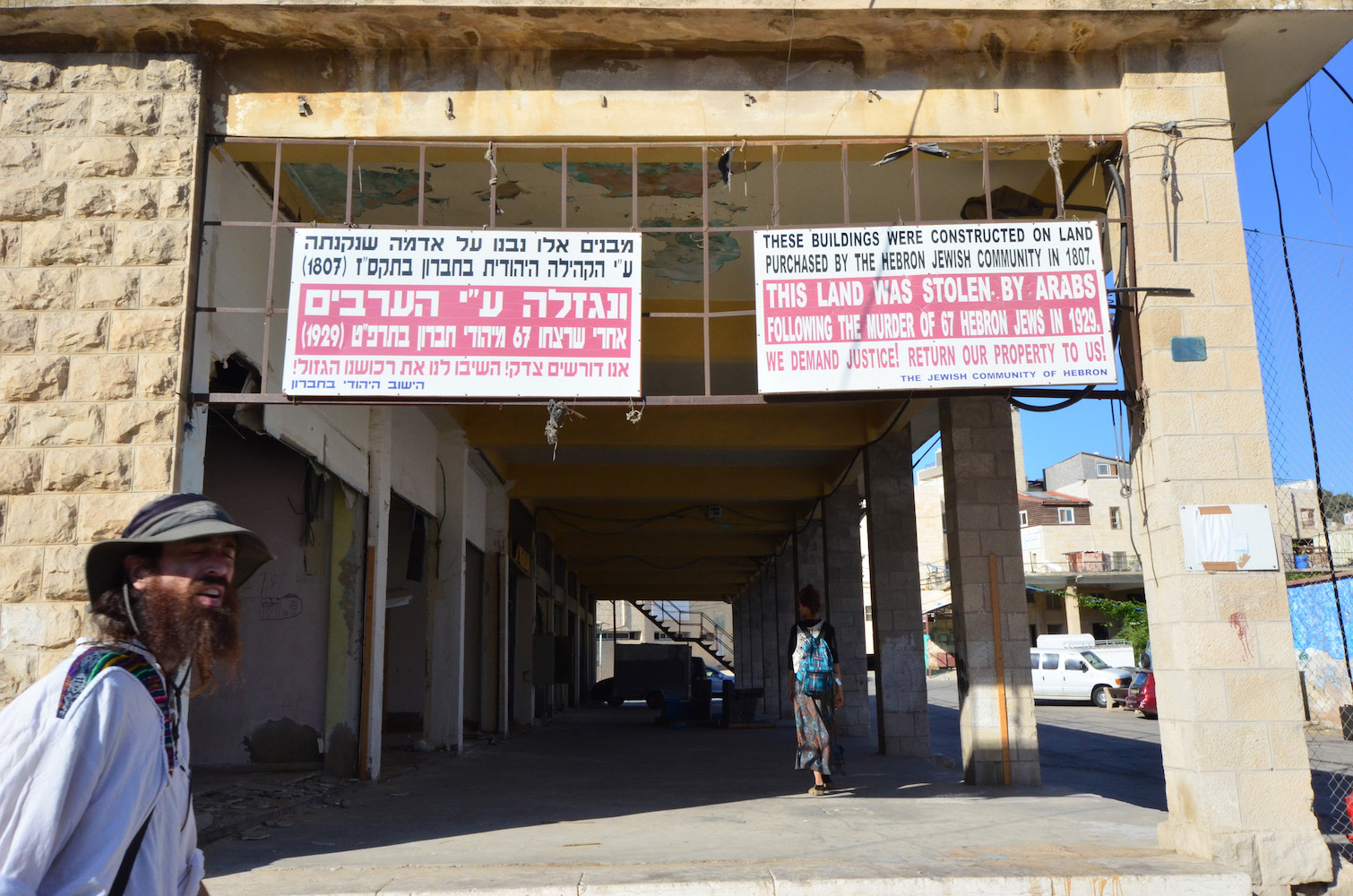
His evidence, of the historical sort more than the religious, was compelling. Both archaeology – the 2,000 year-old Tomb of the Patriarchs is quite literally only the tip of the iceberg – and genealogy almost indisputably point to the Jews as the indigenous owners of the land.
In 1929, long after the Jews’ exile to Egypt – but before, importantly, the establishment of the State of Israel – the Arabs they had been living beside since the 1500s inexplicably killed almost 70 of them in a horrific massacre. Although violence has been comparatively sparse since Jews re-entered Hebron in 1968, it is nonetheless still present – an Israeli soldier was killed just last week.
And yet in spite of the narrative Adam presented, which was without a doubt better constructed than that of his Palestinian counterpart, his words were overshadows by reality: That a very small community of Israelis, protected by a large number of soldiers, has trapped a huge Palestinian population, inhibiting them from the self-determination they claim to hold so dear.
And although the settlers’ living situation is far from ideal, the Palestinians live behind mesh, barbed wire and walls someone else built – the apartheid comparison I argued against last week is not completely inaccurate, in this case.
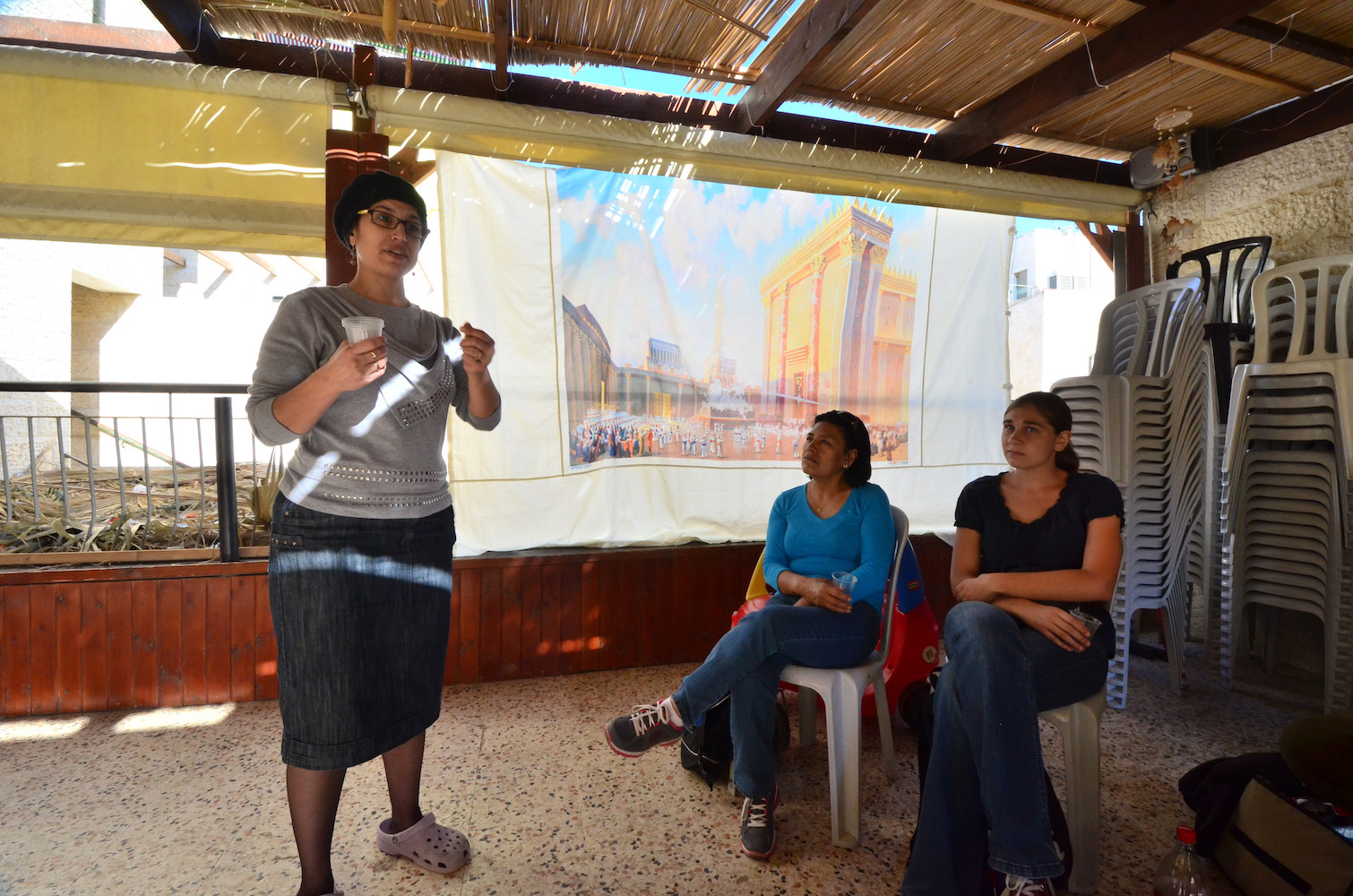
Ironically, meeting the settler to whom Adam introduced me with the idea that her testimony would sway me was what alienated me most. She was an American woman who moved to Hebron with her husband over a decade ago.
“We decided we wanted to give our life a spiritual meaning,” she recalled, and recited Torah passages that stake the Jews’ claim to Hebron, from memory.
“If you repeat a lie enough,” she responded, when I asked her if she’d ever had a Palestinian friend, and informed her how willing every Palestinian I had ever met was to work toward peace, regardless of the logistics, “you’ll eventually believe it. The Palestinians don’t want us here. Their religious doctrine encourages them to kill.
“And although nothing in our holy book, and no leader in our religion, would ever condone such a heinous act, I gotta say,” she continued, adopting a decidedly Long Island accent. “I don’t really want them here, either. This land is ours – anyone who’s read the Bible for a few minutes knows that.”
Abraham Tours offers West Bank tours, which are tailored to suit the interests of independent travelers who want authentic experiences, several times weekly from Abraham Hostel in Jerusalem.



